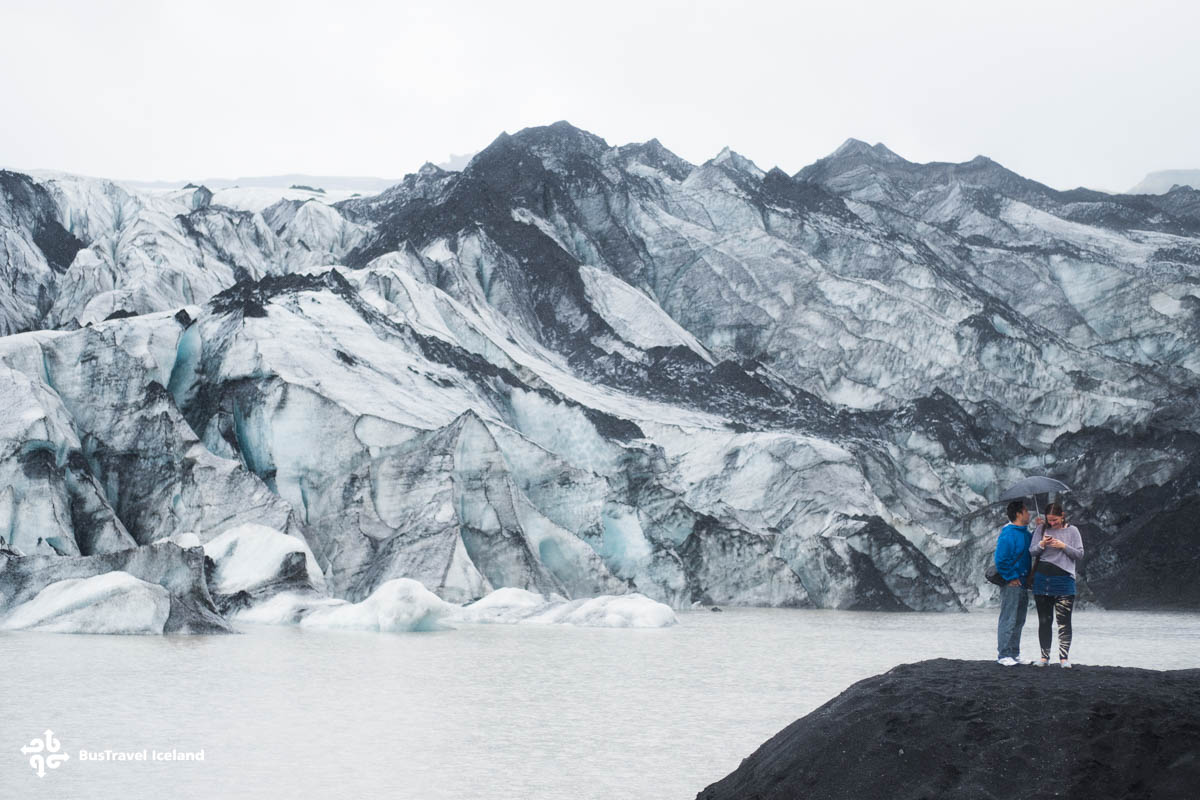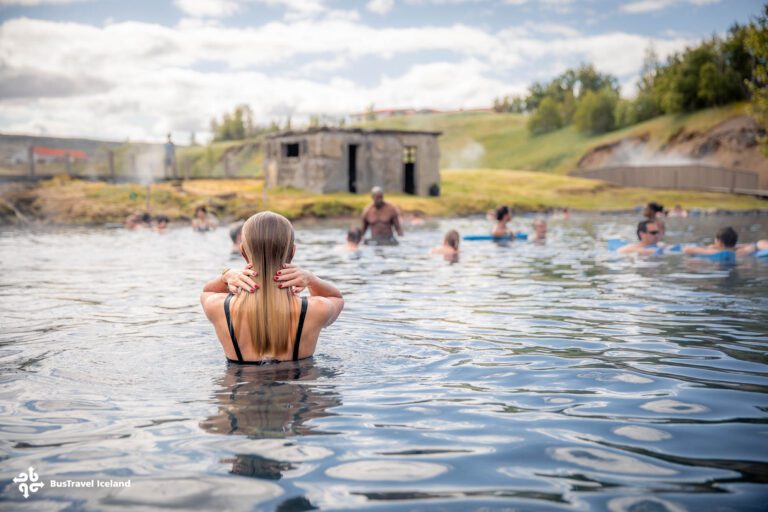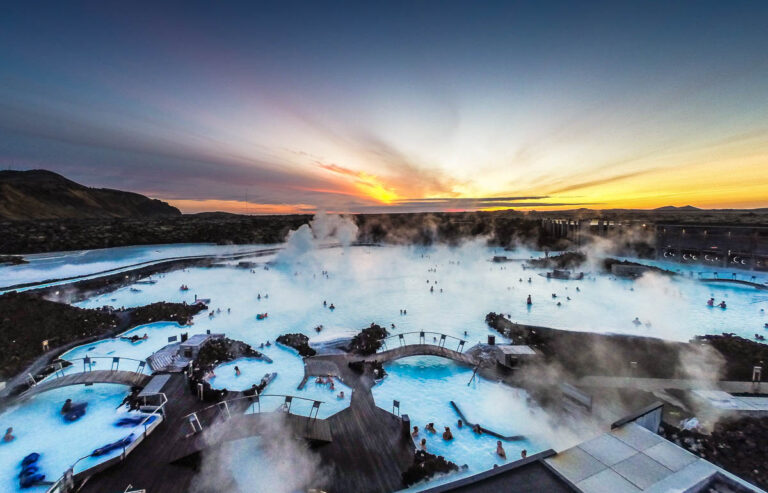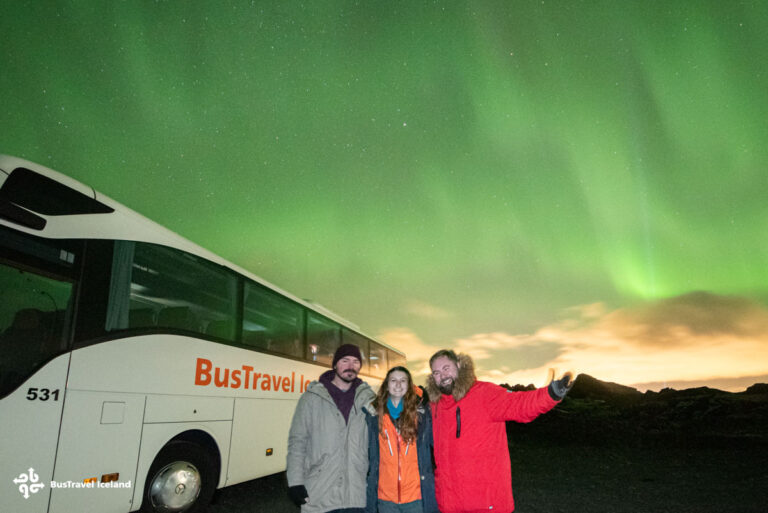Hvítárvatn: Exploring Iceland’s Pristine Glacial Lake
- Golden Circle Iceland
- 8 Sep 2023
Hvítárvatn, by Longjökull Glacier in Iceland, is a clear glacial lake surrounded by icy wilderness, creating a serene and beautiful natural spot.

Hvítárvatn’s Geographical Context
In my guide and exploration of Hvítárvatn, I focus on the geographical features that define this remarkable Icelandic lake. Let’s navigate through its precise location, topography, nearby landmarks, and the influence it exerts on the region.
Location and Coordinates
Hvítárvatn lies nestled in the Highlands of Iceland, specifically in the Suðurland region. The lake’s coordinates are 64.5932° N, 19.8438° W, which place it in a remote and sparsely populated area famed for its natural beauty.

Topography and Elevation
Surrounded by the rugged landscape that is characteristic of the Icelandic Highlands, Hvítárvatn sits at an elevation of nearly 421 meters above sea level. With a surface area of approximately 30 square kilometers and a maximum depth of 84 meters, it is significant both in size and depth, owed largely to its glacial origins.
Surrounding Landmarks
A mere 45 kilometers northeast of the majestic Gullfoss waterfall, Hvítárvatn forms a central part of a larger natural canvas. The lake is at the eastern edge of Langjökull, Iceland’s second-largest glacier, solidifying its status as a natural landmark of note within the Highlands of Iceland.

Regional Influence
The lake serves as the source of the Hvítá river, an important watershed in the region. The glacial river Hvítá makes a significant contribution to the landscape and ecology of Suðurland, and by extension, to the Highlands of Iceland. Hvítárvatn’s presence supports local biodiversity and impacts human activities, setting the stage for its wider regional importance.

Physical Characteristics
Hvítárvatn showcases an array of stunning features ranging from its glacial origins to its ecological environment. Let’s take a look at Hvitarvatn’s look, its influence of glaciers, hydrological characteristics, and the flora and fauna that inhabit its environs.
Lake Description
Hvítárvatn, commonly referred to as the white river lake, spans an impressive area and boasts significant depth. Facts about the lake include:
- Surface Area: 28.9 km²
- Maximum Depth: Approximately 83 meters
- Filled with: Freshwater
- Appearance: Milky color due to glacial sediment
This glacier lake is set in the Highland region of Iceland, functioning as a quintessential representation of the country’s pristine freshwater bodies.

Glacial Influences
This lake is intimately connected to the glacial dynamics of the Langjökull ice cap. The critical points are:
- Proximity to Langjökull: Positioning affects sediment and freshwater input.
- Glacier Impact: Melting and erosion heavily influence lake’s sediment and water composition, imparting a milky hue.
Our lake’s very existence and its physical state are thus shaped by these fluctuations of ice above it.
Hydrology
The hydrological aspects of Hvítárvatn are influenced by:
- Primary Outflow: The glacial river Hvítá emerges from the lake, contributing to its dynamic water system.
- Basin Characteristics: Covering an extensive watershed area, the basin sustains the lake’s volume and ecological features.
These factors ensure Hvítárvatn is not just a static body of water but a crucial element in a larger hydrological cycle.

Flora and Fauna
Hvítárvatn, in its remote Highland location, supports diverse biological communities. The ecosystem is characterized by:
- Regional Vegetation: Hardy, endemic plant life adapted to the cold temperatures and altitude.
- Wildlife: A variety of species, from waterfowl to terrestrial organisms, call this highland lake home.
The ecological significance of Hvítárvatn’s flora and fauna enhances its role within the natural landscape of Iceland.

Cultural Significance
In exploring the cultural significance of Hvítárvatn, it’s good to cover a tapestry of history and myth deeply interwoven into the Icelandic identity. The examination leads me through age-old tales and historical accounts that amplify the prominence of this remote yet captivating locale.
Historical References
I see Hvítárvatn not merely as a natural wonder but also as a geographical feature rich with historical importance. The lake’s glacial waters are the inception point of the Hvítá river, central to the settlement and survival of populations in ancient Iceland. Its proximity to Langjökull, one of Iceland’s largest glaciers, has rendered it a significant landmark within sagas that trace the nation’s arduous path through the centuries.

Local Myths and Legends
The lake’s crystal-clear waters, while beautiful, are often attributed with an Icelandic mysticism. Stories handed down through generations cast Hvítárvatn as the abode of entities beyond the world. It’s said that the hvítur (white) in its name, referring to the Icelandic pronunciation of white, hints at the ghostly apparitions that visitors have claimed to witness—fueling beliefs that the area might be haunted. It’s good to separate fact from fiction, acknowledging these narratives as a testament to the local cultural fabric.
Through the Icelandic adjective-laden folktales, Hvítárvatn remains a compelling chapter in the broader saga of Iceland, showcasing a landscape where every natural element is steeped in cultural significance.
Nearby Attractions
When visiting the serene Hvítárvatn, it’s wonderful to know that there are a variety of remarkable attractions nearby. Among these, the Gullfoss Waterfall stands out as a crown jewel, approximately 45 km away from the lake. This stunning cascade is one of Iceland’s most iconic landmarks, offering breathtaking views where the river Hvita plunges into a rugged canyon.
Besides Gullfoss, there are other points of interest in the region:
Geysir Geothermal Area: Located a short drive from Gullfoss, Geysir is home to the famous Strokkur geyser, which erupts every few minutes.

Langjökull Glacier: As Hvítárvatn is situated at the eastern edge of Langjökull, one of Iceland’s largest glaciers, it provides opportunities for adventurous activities like snowmobiling and ice cave tours.

Þingvellir National Park (Thingvellir): A site of historical, cultural, and geological significance which is part of the Golden Circle route.
![Thingvellir National Park in Autumn The glorious Autumn colors of the beautiful Thingvellir National Park, the Golden Circle of Iceland [Photo by Yanshu]](https://bustravel.is/wp-content/uploads/2023/10/Thingvellir-National-Park-in-Autumn-YSL_3692.jpg)
It’s very popular to plan a day trips to these attractions to enrich your experience in the Icelandic Highlands. Each location offers a unique perspective on the natural beauty and geological wonders of Iceland. Remember, while the highlands are beautiful, they are also remote; planning ahead is essential for a safe and enjoyable trip.





































